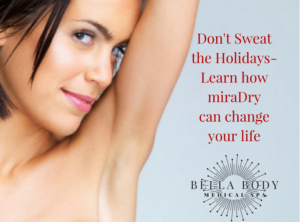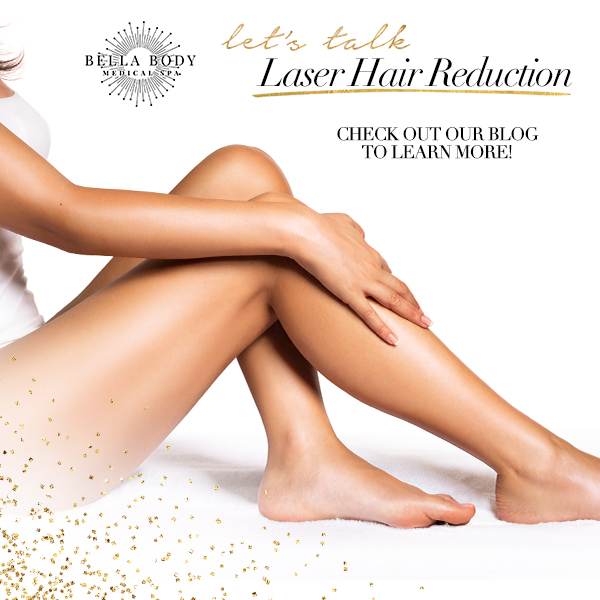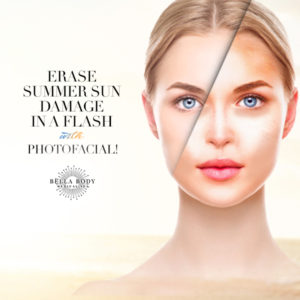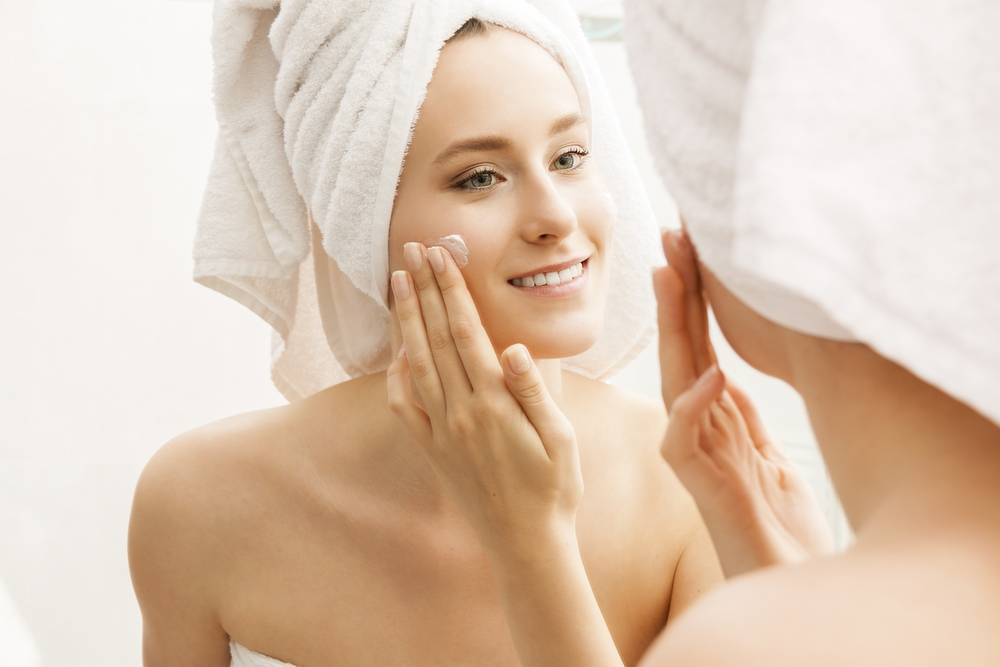Jan 14 2018 Did we find the Fountain of Youth?

Growth Factors – The Fountain of Youth?Do you keep hearing the words Growth Factors? Do you wonder what they do? How they work? And why they’re in your skin care? Keep reading to understand how Growth Factors can benefit your skin in a major way.
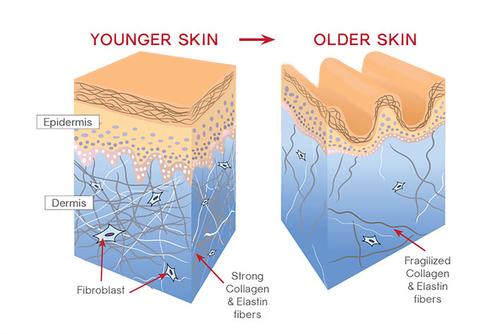
What are Growth Factors and what do they do?
Growth Factors are natural substances made by skin cells to maintain healthy skin and boost communication between cells. They help to repair damaged skin, while providing components for firmness and elasticity. They also help maintain the skin’s protective functions and when used in topical products they help to facilitate healing and support protein growth to reverse the signs of aging.
Growth factors can more or less pass over the dead skin cells that form the stratum corneum and create a signaling pathway with the living skin cells deeper with the skin. Therefore, despite being rather large, growth factors are still able to meaningfully impact and improve cellular functioning.
As we age, we make less Growth Factors naturally than we did in our youth, so incorporating growth factors into our skin care regiment is crucial to maintain the overall health of our skin.
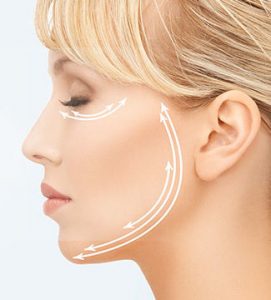
Where do Growth Factors in our skin care come from?
There are several places that growth factors come from, which can be derived from human cells grown in a laboratory to non-human sources, such as, snails and plants. Examples of human cells are skin cells, bone marrow skin cells, fat stem cells and even from your own Platelets. Each and every one of these cells can help reverse the signs of aging in the skin.

Do Growth Factors really work?
Research has proven that topically applied Growth Factors have shown increased improvements in the appearance of fine lines, wrinkles, texture and even discoloration. When incorporated with antioxidants results can be achieved even sooner!
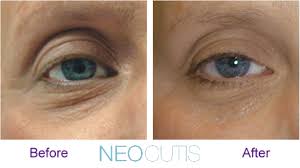
At Bella Body Medical Spa, we carry the Neocutis line of Growth Factor Skin Care that uses cutting edge Swiss technology to help transform your skin. You can read more about their products here or call anytime to schedule your complimentary skin care consultation 215.622.7724
Comments are closed.
Nov 20 2017 Don’t sweat it!
Do you suffer from Underarm sweat?
Have you tried other procedures in the past and had no success? Well look no further for our miraDry Treatment. This non-invasive procedure uses ground breaking, clinically proven technology to significantly reduce underarm sweat. There is no pain and very minimal to no downtime.
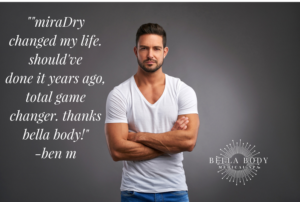
How does miraDry work?
The miraDry procedure usually takes between 1-2 hours. Our nurse will numb the area with a local anesthesia and outline the area that we are targeting. miraDry uses microwave technology, where electromagnetic energy is delivered to the underarm to destroy the overactive sweat glands. While the energy is being release, the miraDry system will also release waves of cooling energy to prevent any discomfort or burning.
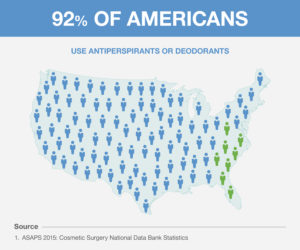
How many treatments are needed?
Most patients usually only need one treatment, but with conditions, such as, hyperhidrosis, a patient may need 1-2 treatments, scheduled 3 months apart. In rare cases, a third treatment may be needed.
What is the success rate of miraDry?
Results can vary from individual to individual, however, a reported 75-95% of patients have seen a reduction in sweat and body odor in the underarm area.

What should I expect Post Procedure?
While everyone is different, patients may experience swelling, soreness and/or a tingling sensation underneath the arms. The side effects usually subside within a week following the procedure. Patients should see an immediate reduction in the amount of sweat they produce. Sweat glands cannot regenerate, therefore, results are long-lasting. Majority of patients may return to work and personal schedules immediately following the treatment.
Watch how miradry works and how it can help give you freedom from sweat and odor
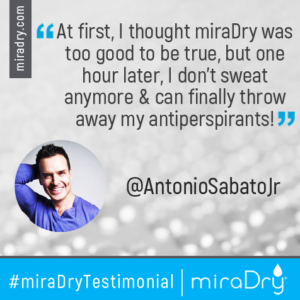
Have questions? Why wait? Schedule your private, complimentary consultation today in person or by phone at 215.622.7724
Comments are closed.Oct 17 2017 Let’s Talk Laser Hair Reduction
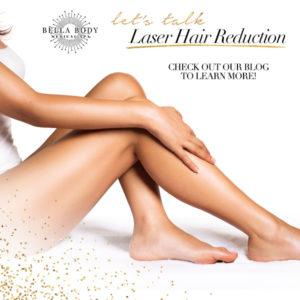 So, what is it that Lasers do?
So, what is it that Lasers do?Lasers are a device that uses light energy to eradicate the hair follicle. Therefore, hair growth is reduced due to the follicle being destroyed. It can be slightly painful, like a rubber band slapping you on each zap, but nothing that a little numbing cream can’t lessen.
Who is the ideal client for laser hair reduction?
The ideal laser client is someone that has lighter to medium dark complexion or a patient with a higher contrast between hair color and skin color and has darker, coarser hair. Therefore, anyone with lighter or whiter hair would not be an ideal candidate because they lack the targeted pigment the lasers are attracted to.
 When is the ideal time to start laser hair treatments?
When is the ideal time to start laser hair treatments?The fall is a great time to start receiving laser hair treatments because our skin must be free of any UV exposure or sunless tanner. Your skin is comprised after exposure to the sun therefore we would not want to sustain any damage or blistering to the skin. So once our tans have faded and we’re cozy in our sweaters, we should start our laser hair reduction to have reduced hair for the coming summer months!
Did you know…
Your hair grows in 3 stages. Hair growth in the active stage is the ideal time to have a laser treatment.
It takes time to catch every hair in that active stage so treatments are spaced out anywhere from 4-8 weeks.
Most clients will see an 85% reduction in growth on those coarse, dark hairs.
Certain disorders, such as, hirsutism and PCOS, can cause hair to continually grow even during a series of LHR because those with these conditions are more susceptible to have continued hair growth. While, most see a result and use it to help control the hair growth, it may take them longer to see results.
Pre- and Post Laser Hair Treatment…
Before your scheduled laser hair removal you want to be aware of any sun exposure you have had in the two weeks prior to your service or any sunless tanner that may still be on the skin. Most importantly, waxing or tweezing should not be performed 6 weeks prior to the start of your treatment and most importantly during your series. Again, we need the hair in that active growth stage to achieve the most effective result.
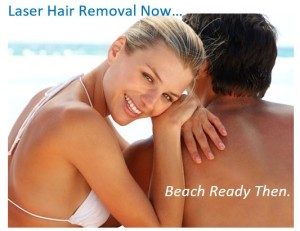 It’s time to ditch the razors for good!
It’s time to ditch the razors for good!Give us a call to set up your private consultation and schedule your first session. Get started now so you can enjoy razor smooth skin without shaving, for years to come! Take advantage of our Fall Special, Buy one area and we will add a second area complimentary. 215.622.7724 or hello@www.bellabodymedicalspa.com
Comments are closed.
Oct 17 2017 Erase Summer Sun Damage in a Flash
Now that summer is over and we are approaching fall we all want to know how we can clear up the damage that we have caused to our skin. Enter the IPL Photo Facial.
What happens to your skin in the summer sun?
Hyperpigmentation occurs when melanin is overproduced in certain spots of the skin. Pigment spots, such as age spots, are caused by sun exposure. They appear mainly on the face, chest, and hands. They tend to be small darkened patches of skin. Unfortunately, the UV radiation can sometimes be too much for this melanin to handle, so the skin reacts in a build up of darker cells that act as a protector, or “sunglasses”, for the over-exposed area of the skin.
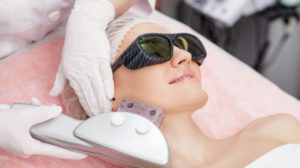
How can an IPL PhotoFacial help?
IPL treatments are most commonly used for lightening and removing sun spots and age spots along with reducing redness, rosacea, and broken blood vessels on the face, neck, and chest. This treatment also addresses skin tone and texture along with fine lines and wrinkles by stimulating collagen growth and larger pores by reducing the amount of oil the skin produces.
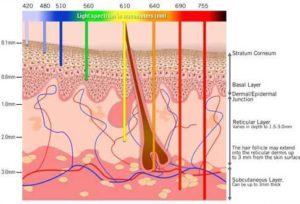
What is IPL doing to your skin?
IPL stands for Intense Pulsed Light and works by stimulating deeper tissues of the skin with a range of concentrated light. The lightwaves are targeted at hemoglobin (red blood cells) or melanin (brown pigment in freckles/age spots). The light beam passes through the skin and is absorbed by either the hemoglobin or melanin resulting in damage to the vessel wall or melanin pigment. These tiny vessels are then absorbed by the body rendering them less visible.
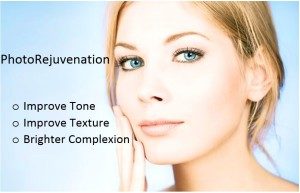
How will you look after a PhotoFacial?
Immediately after the treatment your skin will be slightly red. Any pigmentation will get darker right away and flake off like dry skin over 2-3 days. For veins, the skin will look slightly redder after the treatment for 2-3 days. Make-up can be applied right after the treatment. A healing foundation called Oxygenetics is available at Bella Body Medical Spa which can be applied following your treatment to help conceal any redness. Results are achieved with little to no discomfort or downtime. A minimum of 3 treatments every 4 weeks is recommended for optimal results.
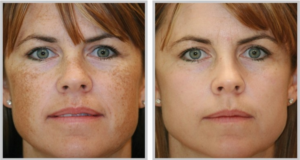
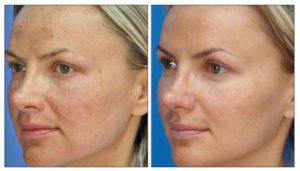
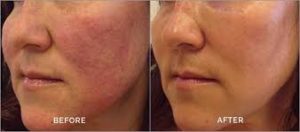
Set up your complimentary consultation with our Skin Care Experts to see how a PhotoFacial can benefit you, 215.622.7724. You can also learn more about our PhotoFacial here.
Comments are closed
Oct 17 2017 Who Needs Sunscreen on a Cloudy Day?
YOU DO! We all do. Every face should wear sunscreen, every day. Rain, Shine, Snow, Cloudy with a chance of meatballs, no matter the weather, your skin needs protection and that is what sunscreen does.
“Ultraviolet rays that are the cause of sun damage and skin cancer are always present, they are independent of cold or hot weather and are not blocked by clouds” explains Dr. Shilesh Iyer, M.D., a Board Certified dermatologist with the renowned New York Dermatology Group.
That well know term “UV” stands for Ultra Violet, a type of electromagnetic radiation. UV light, which comes from the sun, is invisible to the human eye and would be severely damaging to living things if not filtered by the earths atmosphere. It makes black-light posters glow, and is responsible for the telltale signs of over-exposure such as summer tans, freckles and sunburns.
Ultraviolet is also responsible for the formation of bone-strengthening vitamin D thus has effects both beneficial and harmful to human health.
UV has A rays and B rays. You have probably heard of them, but as many times as we have seen products that help protect against them, do we actually realize what they are doing?
UVA (aging) rays account for 95% of our sun exposure. They cause skin aging and contribute to skin cancer. UVA rays penetrate deeply into the skin layers, damaging collagen and cells which leads to wrinkling, hyperpigmentation and loss of elasticity. UVB (burning) rays mostly affect the outer layer of the skin. They cause sunburns and tanning that increase the risk of skin cancer and other disorders. The risk for skin cancer doubles in people who have had five or more sunburns. (Skin Cancer Foundation Nov. 2010)
“Broad-spectrum sunscreens” provide protection against both UVA & UVB rays. When wearing broad protection sunscreens, the UVA and UVB rays reflect and scatter away from your skin, providing you protection from sunburn and decreasing the risk of skin cancer and early skin aging caused by the sun.
There are two types of protection, physical and chemical. Chemical sun block contains organic (carbon-based) compounds, such as oxybenzone, octinoxate, octisalate and avobenzone, which create a chemical reaction and work by changing UV rays into heat, then releasing that heat from the skin.
Physical sunscreens contain active mineral ingredients, such as titanium dioxide or zinc oxide, which work by sitting on top of the skin to deflect and scatter damaging UV rays away from the skin.
Both are beneficial and provide excellent coverage when applied correctly and frequently.
We have a range of sun care options at Bella Body Medical Spa that include physical and chemical sunscreens such as Obagi, EltaMD and Brush on Block – a great “to go” sunscreen that you can toss in your bag and “brush on the sunblock” while on the go without removing makeup.
Give us a call if you have any questions. Our Anti-Aging Skin Care Experts can help guide you to the best protection for your pretty face, 215.622.7724
Comments are closed.
Oct 17 2017 Should I Use My Retin-A in the Summer?
Can I use my Medical Grade Skin Care Products with Tretinoin and Hydroquinone during the summer?
“Summer is actually a good time to start a retinoid: Humidity makes your skin less likely to dry out as it adjusts. Of course, apply sunscreen (SPF 30, at least) as diligently as you always do.” –Doris Day, MD
Absolutely! In fact, it is especially important to use your products during the summer when sun exposure is at its highest and skin’s susceptibility to sun damage is at its peak. If there was ever a time to correct and protect your skin, SUMMER is that time!
One of the misconceptions regarding Tretinoin is that it thins the skin and makes skin more susceptible to sun burn. Experts would disagree! Although this can appear true during your skin’s initial adjustment period (as skin can experience redness, sensitivity and irritation), with continued use of Tretinoin, the epidermis is actually thickened and strengthened. While your skin is adjusting to your retinoic acid/Tretinoin – as ALWAYS – it is important to use an SPF. With proper protection, you can experience the benefits of great skin care, all year long.
What do the experts say?
Suzan Obagi, MD, Associate Professor of Dermatology and Associate Professor of Plastic Surgery, Director, UPMC Cosmetic Surgery and Skin Health Center
University of Pittsburgh Medical Center hears this question a lot:
“Many patients ask if they should take a break from using their skincare products during the summer months. This stems from concerns with sun exposure and increased outdoor activities. However, I have oftentimes found that patients that need the NuDerm product line most are those with pigmentation issues such as melasma or post-inflammatory hyperpigmentation. These are conditions that typically flare and worsen during hot, sunny weather. In order for patients to have adequate control over these conditions, I recommend that they continue to use their NuDerm products as instructed. This goes hand in hand with sun avoidance during the peak hours of 10 am to 2 pm, wearing a hat when outdoors, and reapplying their sunscreen after sweating, swimming, or every 2 hours while outdoors. Furthermore, while ultraviolet ray B (UVB, the burning ray) increases during the summer, UVA (the aging ray) remains constant all year. Therefore it is imperative to use a daily, broad-spectrum sunscreen such as Obagi Sun Shield. I recommend it even while driving or working under fluorescent lights, as these are sources of ultraviolet light exposure that most patients do not realize.”
Doris Day, MD, is also renowned for her expertise and is a leading expert on dermatology and aesthetic dermatology. Dr. Day is affiliated with Lenox Hill Hospital in New York City and is a clinical associate professor of dermatology at the New York University Langone Medical Center where she was presented with the award for Dedication and Excellence in the Teaching of Dermatology. According to Dr. Day with regard to retinoid usage and sensitivity: “This is one of the biggest retinoid myths,” says Doris Day, MD, (a Tretinoin user herself). “The ingredient itself is sensitive to sunlight, which is why you should apply it before bed at night. A retinoid shouldn’t make your skin any more vulnerable to UV rays than it would be after buffing away dead skin with a face scrub. Summer is actually a good time to start a retinoid: Humidity makes your skin less likely to dry out as it adjusts. Of course, apply sunscreen (SPF 30, at least) as diligently as you always do.”
Is there anything extra I can do to protect my skin during the summer months when sun exposure is at its peak?
In addition to using a sunscreen, incorporate a topical antioxidant into your morning skin care routine. Antioxidants help in the fight against free radical and sun damage. They help stabilize collagen, which helps reduce the aging effects the sun inflicts on our skin. Vitamin C in the form of L-ascorbic acid is believed by many experts to be the most stable and effective in protecting skin. Obagi offers a full portfolio of vitamin C (l-ascorbic acid) products: Pro C formulas 10%, 15% and 20%. Apply a few drops, first thing in the morning, after cleansing and toning. (Be careful to avoid the eye area if you’re using Elastiderm Eye Cream as Elastiderm contains a copper peptide which neutralizes the benefits of the copper and C when the two ingredients come into contact.)
Stopping your medical grade products in the summer increases your chance for additional, untreated photo damage – the very thing we are trying to correct and avoid.
During the summer months, it is important to continue use of products keeping pigmentation in check, as well as improving texture, tone, and laxity issues.
Confidently enjoy your products and wonderful skin all year long!
If you have questions about which products are right for your skin, our anti-aging experts at Bella Body Medical Spa can help. Schedule a complimentary consultation to discuss what’s best for you. 215.622.7724Comments are closed.
Jun 22 2017 The Eyes are the First To Go
Sadly, the eyes are often the first to go. Under-eye puffiness and bags are common concerns, but there’s another concern that is being voiced more and more – ‘What can I do about my under-eye hollows?” Over time, there’s an almost imperceptible hollowing. It happens slowly at first, but all at once, you notice how prominently in stands out. Perhaps you can’t pinpoint the cause, but one day you think “Wow. I look tired.”
Women who experience this feel like they look tired, even when they are not. Yes, topical eye creams and treatments like Botox and lasers address the quality of the skin, but do not correct volume loss.
What are tear troughs?
The tear trough (in medical language: nasojugal groove) is the space that extends from the inner corner of the eye, making an arc shape, and continuing on to the outer corner of the eye. It’s basically the crescent-shaped area directly under your eye. That volume loss causes the orbital bone, which is just under the tear trough and sits at the top of the cheek, to show more, creating a hollow trough that appears as a dark circle. The hollowness can also create a shadow that contributes to darkness under the eye.
Why do our eyes hollow out?
This may come as a surprise, but the most common factor is heredity. Thanks mom and dad! To get a bit more technical, a hollowing of the eyes is caused by the inevitable downward shift of the face. We see this change as early as our 20’s, when we start to lose fat and collagen and the face starts to drop, creating a little concavity under the eye. As we age, fat in the cheek slides down the bones of the face (which are also thinning). A few things occur simultaneously that have a significant impact. The fat pads that shape this area begin to drop, leaving a hollow look. Concurrently, you also have bone loss, which offers less support to the area. Finally, as we age, the elastin and collagen in the mid-dermis diminishes, which causes sagging to occur. This process can be delayed by applying sunscreen daily, not smoking and wearing polarized sunglasses regularly to minimize damage.
Why Dermal Fillers?
To combat the hollowing effect, dermal fillers offer a game changing solution. Dermal fillers are comprised of hyaluronic acid, a naturally occurring sugar in the body that literally “fills” hollowed areas in order to restore volume under the eye and in the upper cheek. The most popular filler to treat hollowing is Restylane® or Juvederm, ® which delivers instant results. And the best part? If you don’t like the outcome, there is a treatment available that dissolves the dermal filler. One or two treatments are typically enough to see a difference, depending on the number of syringes used. How long the results last depend on skin type, lifestyle and age, but the typical longevity for filler is between six to eight months.
Most of the problem is concentrated in the mid-face, from the mid-eye down to the upper lip. As volume loss in the cheeks can also impact the look of the eyes, many aesthetic specialists look to that area to see if it needs to be restored in any way. It may sound counter-intuitive to start with anything other than the under eyes, but volume loss in the face has many effects.
To prove it here’s a little test for you to try at home (or even on your lunch break!): while looking in the mirror, pinch your outer cheeks (toward the temple) with all five fingers to lift them up a bit. When you do, you might notice under eye shadows lightening a bit. The added lift in the cheeks makes the under-eye hollows appear less deep and defined. Filler in the upper cheeks mirrors that effect in a natural way.
When doctors fill the cheek they typically do so with a thicker filler that creates volume, like Voluma or Restylane. They place it close to the bone so the result is a natural lifting of the facial tissue.
The technique for filling the tear trough is similar in that the hyaluronic acid is generally placed on top of the bone. Once you put the filler on top of the bone, you can use a Q-tip and roll it in there. You can see it going into the channel and filling it in. Doctors use a thin tube called a cannula to place the filler. It’s flexible so it doesn’t damage surrounding tissue as much as a regular needle. Patients are also less likely to bruise.
Instant Results
For patients, this procedure is instantly gratifying. The eyes and face seem brighter and more awake because the filler reduces under-eye hollowing. And while the procedure isn’t cheap, the instant results are a major upside, and justification enough for the spend. The procedure typically costs around $800, depending on how much filler is used. And because hyaluronic acid, the substance fillers are made of, is naturally occurring in the body, its effect is not permanent. The body eventually metabolizes the product.
But there are two points of good news. First, unlike other areas of the face that are more mobile and where filler only lasts about nine months, filler in the tear trough lasts closer to one year. Also, placing hyaluronic acid inside the skin stimulates collagen production. So, you may end up with some added, long-lasting benefits. Because of this effect, it’s great to start filling early.
Mar 23 2017 When “Doing It All Mom’s” Often Neglect Themselves
Who Runs the World? Girls!
Beyoncé said it best in her hit song “Run the World (Girls).” Woman these days are professional multi-taskers that really can do it all. They raise children, advance their careers, care for extended family members and friends and manage their households. It is no wonder being overworked and exhausted is a popular topic among women.
Women will ensure everybody in the family is healthy, physically, mentally and emotionally, except themselves. This self-neglect can leave them more vulnerable to depression, anxiety and physical ailments as well. There is always something or someone to attend to, but mom is often abandoning or rearranging her own appointments to accommodate someone else’s schedule.
Research has revealed that it is not surprising that women do not make time to care for themselves. Dr. Gail Saltz, Psychiatrist, says many women often feel guilty about taking time for themselves. “There is some maternal ideal of being self-sacrificing that just isn’t consistent with having time for yourself,” she said. She believes the women need to distinguish between being selfish in a bad way and being selfish in a healthy way. “You have to put on your oxygen mask first,” she says. “If you go to pieces, everyone is going down with you. So you have to give time to yourself. That is healthy, not selfish or narcissistic. That is a tough concept for a lot of women.”
Not having enough time always seem to be the culprit for why women put themselves last. However, studies reveal that even taking as little as 15 to 30 minute a day will help women relieve stress. The most effective way to allot time for you each day is to build it into a schedule. To achieve success, you must know what works for you. Activities such as exercise, meditation, listening to music or taking a bath can promote relaxation.
Dr. Janet Taylor, Psychiatrist, recommends a writing exercise for women who find taking time for themselves to be challenging. Begin by listing everything you do during the day on one side and then list everything you would like to do on the other side.
Lastly, compare the two sides and adjust your everyday routine to incorporate at least one item from the “would like to do” list. “It’s about changing your mindset,” Taylor says. “We have to learn to put ourselves at the top of the to-do list.”
As a final thought, if you were going to pick one activity for yourself, what would it be? Master how to take care of yourself before attempting to care for others. Consider the critical message that a flight attendant makes prior to takeoff. Secure your own safety first. In that same vein, consider your needs as well as others as you prepare to tackle each new day. Living in a chronically exhausted, unhappy, frustrated, and distracted state is not doing your loved ones any favors. Only then, will you be stronger for it.
Mar 13 2017 Serious Skin Care – How deep do your products go?
Serious Skincare Solutions – How deep do your products go?
Most women can agree that the plethora of skincare options out there can be extremely overwhelming. Every time you turn around there is a new, groundbreaking skincare product promising to work miracles on your skin. There are various philosophies on what constitutes the best skincare routine and what types of products should be utilized. We want to set the record straight when it comes to buying medical grade skincare products, as opposed to cosmeceutical skincare products.
What you are currently putting on your skin may not be completely off base, but it may not be the best solution for your skin or skin concerns, particularly if you are using products that have not been vetted properly. Also, there is no magic mushroom remedy when it comes to correcting specific skin problems such as acne or melasma. The best way to achieve healthy skin can be a challenge. You must be dedicated to utilizing effective products, receiving monthly medical skincare treatments and maintaining a healthy diet. Simple, right?
The main difference that medical grade skincare products offer is that they have the highest concentrations of active ingredients and a potent method for delivering ingredients, that’s already been built into the product. For example, if you purchase a vitamin C product to boost your sun protection and to brighten your skin, L-Ascorbic Acid is the key ingredient to achieving this goal. If you purchase a Vitamin C product from Sephora, you may be getting a very small percentage of the ingredient that is needed and most of the product is made up of filler products and water. Now let’s compare to a medical grade Vitamin C serum such as Obagi Professional C-Serums 15%. These topical formulations contain a stable form of L-Ascorbic Acid. There are many forms of Vitamin C, but L-Ascorbic Acid is the most bioavailable. This means it is better absorbed by the skin and can target necessary areas more effectively than standard cosmeceutical products. You can see that it is much more efficient to implement products that will work on your skin and provide a desired outcome.
Over the counter products such as Rodan & Fields are only approved to treat the surface layer of the skin, while medical grade products reach the deep layers of the skin. Whether you’re challenged with acne, aging skin, rosacea or melasma, we recommend reallocating your beauty dollars to investing in products that will treat your skin concerns on the deepest level. This means that when your skin cells turn over, the new skin that has been corrected by your products is revealed, unlike with cosmeceutical products, which only treat the most superficial layer of your skin.
For example, Obagi Blender is designed to be blended with a Retin-A or a Retinol. Again, it is all about the delivery system. The blender takes the Retin-A or Retinol deep into the skin to correct hyperpigmentation and other aging concerns. If you only correct the top layer and not the bottom layers, once the skin cells turnover, hyperpigmentation from the bottom layer will inch its way to the top again.
Lastly, when you buy products at an aesthetic medical practice, you can be confident that the products work because of the proven statistics, science, and clinical knowledge to back the products. Also, the medical aestheticians, nurses and doctors who are recommending these products to you are professionals in the skincare industry and have gone through extensive training to have enough knowledge to advise on right products for your skin.
If you choose to purchase your skincare products from Arbonne, Mary Kay or a similar company, the sales associate may not know the efficacy of the products or the way the ingredients work with the pH of your skin. Trained medical professionals have extensively studied skincare and are educated about the ingredients in the products they recommend and how they will perform on your specific skin type.
The best first step to a solid, effective skincare routine is to meet with your medical professional for a thorough skin analysis. They will recommend a custom treatment and skincare plan.
Mar 02 2017 Achieve Younger Looking Lips
A Guide to Younger Looking Lips
Your mouth may do the talking, but don’t let it tell your age. The lips can impact the overall youthfulness of the face. It can be an easy oversight, but taking care of your lips should be part of your skincare routine. The hallmark signs of aging lips include dryness, distress lines and loss of volume. Today, plumper, prettier lips can be achieved from makeup to skin care to medical treatments. Your lips can avoid the signs of aging with 5 different types of treatments. Below is a quick treatment guide on how to perfect your pout.
- Exfoliate
Many of us are already aware of the importance of hydration when it comes to plump, vibrant looking skin. However, it is common for many to skip the crucial first step, exfoliation, for achieving more youthful looking lips. This rule applies to the skin of your lips just as it does your face. If exfoliation is overlooked, your favorite lip balms will sit on top of the dead skin and will not be able to effectively moisturize your lips.
- Nourish
Applying a hydrating mask after exfoliation is a great way to nourish your lips. To start the day right, consider an overnight lip mask that helps repair your lips while you sleep. This will restore, by infusing hydration into your lips, resulting in a healthier appearance.
- Go Natural
A lip balm composed of all natural ingredients such as oat oil, shea butter, coconut oil and beeswax should be applied throughout the day. Unfortunately, many lip products contain unnatural ingredients such as alcohol, which causes dehydration and my even lead to crinkling or cracking lips. Finally, your lips should be protected daily from the sun with an SPF of 15 or higher.
- Erase Fine Lines
Those pesky fine lines around the lip area continue to become etched into our skin when we talk, laugh and eat. Smoking and heavy alcohol consumption exacerbates this problem greatly. Botox and filler such as JUVÉDERM VOLBELLA® XC can be utilized to soften these lines and create a more rejuvenated appearance.
- Plump
When we are young, our skin is very plump due to an increased amount of collagen and hyaluronic acid. As we grow older, our lips get thinner and flatten. The most effective method for achieving fuller lips for a substantial amount of time is with dermal fillers such as Restylane® Silk or JUVÉDERM VOLBELLA® XC. These dermal fillers mimic the natural feel of your lips and are specifically designed to add volume and fullness back into the lips.


